
 ☰
☰
***PRESS 2018***
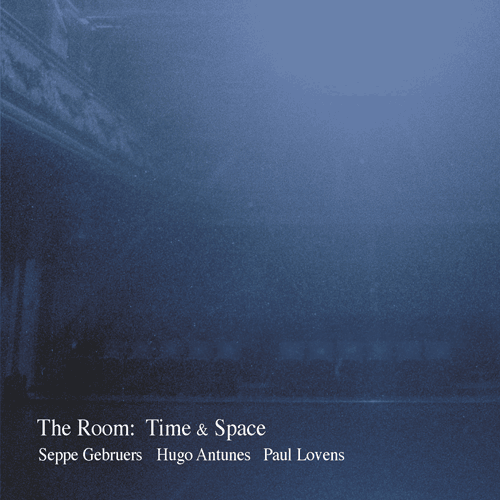 eNR084: The Room: Time & Space by Seppe Gebruers, Hugo Antunes & Paul Lovens
eNR084: The Room: Time & Space by Seppe Gebruers, Hugo Antunes & Paul Lovens
Rui Eduardo Paes, Jazz.pt (12/2018) *****
Durante os anos em que esteve radicado em Bruxelas e depois do seu regresso a Lisboa, o contrabaixista Hugo Antunes tem estado envolvido em alguns dos mais cativantes projectos que nos chegam aos ouvidos, seus ou em colaboração com outros músicos, nacionais (caso da sua associação a Rafael Toral) e de outros países (por exemplo, com Giovanni Di Domenico). Um em particular se destaca, o do trio que formou com o pianista belga Seppe Gebruers e o baterista alemão Paul Lovens, e logo pelo facto de se dedicar a uma prática exploratória da improvisação com uso de microtons. Gebruers utiliza dois pianos em simultâneo, afinados entre si com distâncias de quartos-de-tom, de modo que funcionam, nessa relação, como um só instrumento. Em concordância, o contrabaixo de Antunes, tocado com e sem preparações, e a bateria de Lovens, a que este acrescenta outros recursos percussivos, colocam-se à partida fora das convenções da música ocidental dos nossos dias, e inclusive as da improvisada e do jazz criativo, dando-nos uma outra perspectiva das suas respectivas identidades. No caso do interveniente da cidade de Aachen, tal circunstância é especialmente relevante, pois trata-se de um veterano que esteve na Globe Unity Orchestra de Alexander von Schlippenbach no início dos anos 1970, com este gravando também o referencial "Pakistani Pomade", e que na década seguinte surgiu ao lado de Cecil Taylor em "Leaf Palm Hand" e "Regalia".
Mas se é a microtonalidade que distingue "The Room: Time & Space", o próprio título deste álbum gravado ao vivo indica-nos que o conceito por detrás da música é outro e bem menos definível tecnicamente: a influência que o espaço de uma actuação tem no acto criativo. Como escreveu Paul Lovens nas "liner notes": «As salas têm uma parte central e misteriosa em muitas manifestações da imaginação humana.» Aspectos enumerados pelo baterista como a forma de uma sala, o tamanho, a luz, as cores, a acústica, os cheiros, a temperatura ambiente, a humidade, etc., podem «criar um certo "espírito"». Pois toda esta música é o espírito de um lugar, o do ke nona de Mechelen, um «pequeno e sombrio» teatro belga. Se os "Rooms" que nos vão sendo apresentados numericamente, na sua introspectividade (a introspecção enquanto actividade, porque é impossível ouvir estas cinco peças passivamente), convidam a um mergulho no interior das nossas mentes, o que aqui vem documentado (sem posterior edição de estúdio, como na ficha técnica se salienta) é, na verdade, a ocupação do espaço que circunscrevia o ar e os corpos dos presentes, entre músicos e público assistente, como se a arquitectura fosse uma mente simbiótica, apenas determinável pelos contornos das paredes, algo que se ia construindo na comunhão das consciências e dos corpos individuais, algures em muitos pontos de intersecção. Algo de metafísico até, o que faz deste um disco deveras especial.
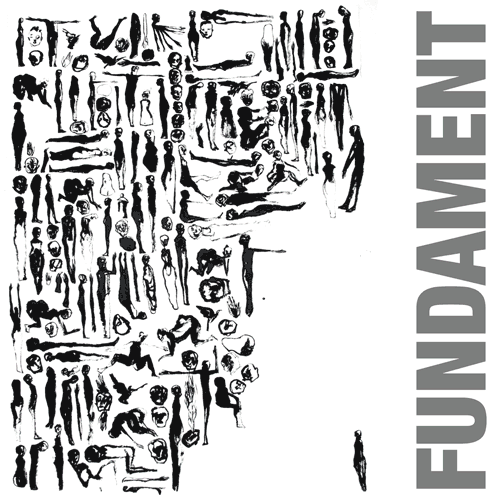 eNR068: s/t by FUNDAMENT
eNR068: s/t by FUNDAMENT
Herman te Loo, Jazzflits 309 p.10 (24/12/2018)
Rond de eeuwwisseling had Klaas Hekman al eens een band met drie contrabassisten en zijn eigen bassaxofoon. Het superlage geluid van die combi- natie intrigeert de Belgische contrabassist Peter Jacquemyn blijkbaar ook. Maar hij gaat nog een flinke stap verder in de samenstelling van zijn en- semble. Met maar liefst vijf contrabassen, twee tuba's, trombone, twee baritonsaxen, een bassax en de vervaarlijke tubax (een soort contrabassaxo- foon) brengt hij een onwaarschijnlijk gezelschap op de been. Het belangrijkste is natuurlijk: wat doe je ermee? Jacquemyn schreef een tweetal grote grafi- sche partituren, waarin hij zich liet inspireren door componisten als John Cage, Anthony Braxton en Karlheinz Stockhausen. In 'Fundament A' horen we breed geschetste klankvelden, waarin de bovento- nen van het lage instrumentarium een fascinerend eigen leven gaan leiden. Omdat alle muzikanten ook nog eens hun stem gebruiken met behulp van Mongoolse keelzang (waarbij de boventonen ook de ultieme klank bepalen) ontstaat een griezelig klank- spectrum dat werkelijk ongeëvenaard is. Elementen als harmonie en ritmiek zijn een tamelijk onbedui- dende rol toebedeeld, waardoor je het gevoel krijgt naar een audioversie van de streken op een ab- stract expressionistisch schilderij te luisteren of een onbestemd ritueel. Een optreden van het gezel- schap moet ook een overweldigende fysieke erva- ring zijn. 'Fundament B' biedt wat meer ruimte en helderheid tussen de klankblokken en ook meer 'extended techniques' van de blazers, waardoor de muziek herkenbaarder is als 'Europese geïmprovi- seerde muziek'. Datzelfde geldt voor het korte stuk 'Blow' (met uptempo geplukte bassen en scheuren- de blazers). Het afsluitende 'Earth' is weer een diep staaltje boventoonzang.
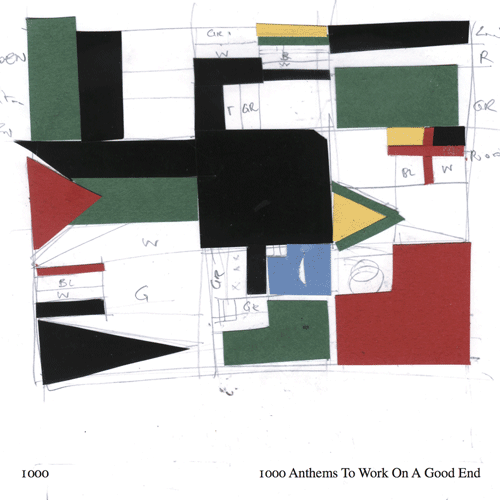 eNR063: 1000 Anthems To Work On A Good End by 1000
eNR063: 1000 Anthems To Work On A Good End by 1000
Fritz Balwit, Audiophile Audition (20/12/2018) ****
When it comes to avant-garde or experimental jazz, I am usually willing to let my colleagues have the first go and wait for a report on the merits of the recordings. An exception is made for music that belongs to the category "Dutch Jazz," broadly conceived as music which displays qualities of humor, theatrical inventiveness, and eccentricity. (we will now epand this concept to Dutch-Belgico ) Early on, the Dutch jazz styles were cross-pollinated by theater music. Emphasis was placed not so much on forms as on the realization of personality. This makes for merry gatherings even when the serious avant garde experiment is the matter at hand. One's ears are bent out of shape, but with high spirits.
It was a lucky accident that brought about my contact with the label Negocito, operating out of Ghent, Belgium that specializes in zany and freshly-imagined improvised music, which we will only call "jazz" because another term doesn't recommend itself. A sample of the label shows a impressive breadth of musicians playing free of genre conceptions but inspired by long-standing ideals of improvised musical expression in small groups with plenty of non-standard ensemble configurations. Immediately catching my eye is the disc under review, charmingly titled 1000 Anthems To Work On A Good End . The group itself is called 1000 and consists of a quartet with Jan Klare on reeds, Bart Maris on Trumpet, Wilbert de Joode on base, and the inimitable Michael Vatcher on drums.
The title suggests inexpert translation. The would-be listener is skeptical at being asked to endure a exposition of National Anthems. Things get weirder as we notice that there will be no less than seven versions of anthems from Afghanistan from different periods of the 20th century and also five from Cambodia. Having counted these up and realized that this is still far short of a 1000, the group decided to offer one each from Syria, China and the obscure Pacific Atoll Niue, the latter with both a vocal and an instrumental version. In between, there are more or less free ensemble pieces each in which "four individuals, invent an anthem for the please of the moment" and then "sing personal hymns simultaneously" and finally "cover up a hymn like Christo would do." In short the program is a hoot but not (wholly) a spoof. The liner notes make it clear that intend on irritating their listeners but have no wish to offend them.
In fact, for all the abundant goofiness, there is a concerted search for melodic sense. Anthems aim for simple appeal; they stir a crowd. The tension of the concept is that this music is so radically individualistic and yet the starting point is a stiff genre that asserts group meaning, often in chauvinistically stupid ways. Claims made in the liner notes that anthems are "reference points for a whole nation" and that they "bring people together" become weirdly ironic in the context of a Cambodian anthem from 1976-1979 which may have even been composed by Pol Pot. The victims of the Khmer Rouge Holocaust were certainly "brought together" and disposed of as part of a Nationalistic nightmare. How does one propose to listen to an anthem connected to this period? The record gives no instructions, so it is up to the listener to decide.
The disc begins with a presumably spontaneous four part improvisation with clarinet and trumpet playing off one another, while the comic jousting is supported by an off-kilter but charming rhythmic pulse. It becomes clear that whatever ceremonial is ahead, it will be leavened by this sort of musical mischief. There follows the first instantiation of the Cambodian national anthem. By strange chance, it sounds just like a New Orleans jump band; absent are any references to a far-Eastern vibe or colonial hybrids. After some stomping and wailing, it sounds like the saxophonist has found the chart and begun to play the anthem in question. The boozy dance feel gives way to just a bit of dignity, quickly undermined by the relentless plunger-mute effects of the trumpet. One wants to doff a hat or salute–not any notion of Nationality but rather a universal spirit of comedy. This little three minute piece is a perfect realization of a fresh jazz concept by turns amusing and stirring, playful and serious. Rather than dreading the next four versions, one eagerly awaits this music of strange purposes.
Jumping ahead to a 1970-75 version of the same anthem by "unknown," we are given some official sounding drum rolls and a dismal march beat. This tune is ragged-up considerably in a fashion that might suggest Ornette Coleman and Don Cherry forced to play a High-School football theme song. Further farcical treatments follow on what is presented as an even later version of the anthem. Bart Maris plunges wildly with the mute against a chaotic whirl of whacks and thumps from the rhythm section. A mysterious interlude ensues with a stately theme played in creditable harmony played against an entrancing swirl of metallic and water effects from drummer Michael Vatcher. This one track is something of a highlight for me as it achieves both the weirdness of the anthem concept but also a rare sort of beauty. Following that Klare and Maris demonstrate a superb rapport as they twine a double melody around what sounds more like a Hebrew melody than anything else. All is twist and turn. Bass and drums alertly adjust to every unexpected phrase. A sawing bass announces the final Cambodian anthem which is genuinely exotic in both treatment and textures, with Klare showing off a very Asiatic flute while Maris squeaks out phrases in a high register.
The main offering consists of seven versions of Afghanistan National Anthems, on the face of it, an absurd proposition. As a modern Nation-State, this one-time mountain kingdom has done very poorly. The several intrusions of westernization have mostly prompted a paroxysm of tribal retribution. The thought of a frail and scarcely legitimate political apparatus standing up with competence and legitimacy is the stuff of wild optimism. All the more fitting that the music is neither martial nor celebratory. Rather it sounds like a tentative and modest effort by a first time composer. In my first term of composition, one of my weaker efforts garnered the encouraging comments from my instructor. "This piece demonstrates that you fully understand that in a melody one notes must follow another." Of this, one could say likewise. The musical material "chosen strictly for artistic reasons" has little to recommend itself. Yet from this simplicity, the ensemble discovers an affecting musical beauty. The trumpet plays straight and clear while modest harmonizing and carefully rhythmic steps make the most out of the theme.
As the variations follow upon one another, we are plunged back into the riddle of what we are to take away from them. Certainly they make no useful musicological commentary on anything pertaining to the political or historical notion of "Afghanistan." What matters, though, is that the music works well enough. Melody and form, surprise and banality, timbre and dynamics are fitted to scaled down and peculiar works as if the challenge was to make a silken purse out of the proverbial sow's ear.
And then we come to an anthem which supposedly comes from the island atoll of Niue. First there is Niue Voices . The text is chopped up and sung in four disparate parts, out of sync.
The Lord in Heaven
Who loves
Niue
Who rules kindly
The Almighty
Who rules completely over Niue Over Niue, Over Niue
Over Niue, Over Niue
Who rules completely over Niue Who rules over Niue
It is a baffling performance but strangely moving. One feels the dread hand of a missionary in the truncated text but the singing feels authentically Polynesian. Disjointed and floating, it evokes calmness in the face of the inevitable, for Niue is sinking inexorably into the Pacific and will be the first casualty of global warming. The scattered voices suggest a diaspora calling to one another over distances that will only increase.
Refugia is a free jazz ramble in the spirit of Ornette and Don Cherry. The longest piece at 6:30, it loses focus midway after a cheerful quarrel and sounds like an anthem gone terribly wrong. A Chinese anthem, credited to Bo Tong, never quite gets going melodically, but the saxophone makes a great caterwauling statement out of the pentatonic allotment of notes while eerie effects are supplied by trumpet, arco bass and a jangle of percussion. There is a grave theatricality that comes across by the (welcome) end. The Syrian anthem sounds like the straightest piece of all. March beat, dutiful rapping on snare alongside a stiff melody. The variations on the chart are ingenious. As throughout the record, New Orleans spirit of group improvisation carries the piece away from parody towards street theater.
This disc is for those who welcome art wrapped in riddles. It might help to leave behind all conception of what an Anthem is supposed to be. On the other hand, this is not an exercise in postmodern deconstruction. It is an brilliantly conceived experiment in exploiting unusual repertoire which contains musical and cultural determinatives that are played with, honored, reframed, puzzled over. It is a privilege of the (hopefully expanding) audience to experience the multiple challenges and pleasures of the musical venture. Certainly the strangest release of 2018 but a very good one.
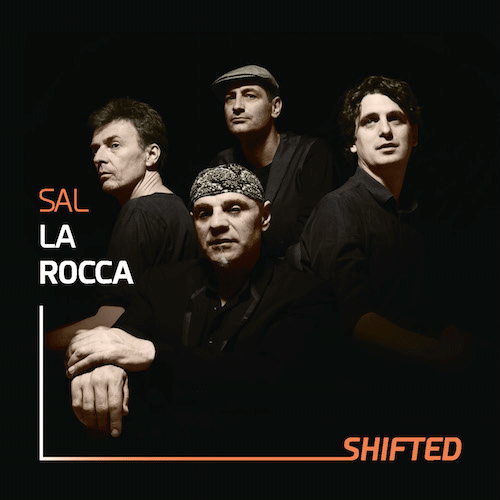 eNR080: Shifted by Sal La Rocca
eNR080: Shifted by Sal La Rocca
Claude Loxhay, Jazzaround Mag (13/12/2018)
En plus de 30 ans de carrière, il en a fait du chemin, l'ami Sal : des clubs liégeois de ses débuts à cette tournée en Chine avec Phil Abraham. Il a multiplié les rencontres. Il a croisé la crème du jazz belge : Jacques Pelzer, Toots, Philip Catherine, Steve Houben (album « Blue Circunstances »), Peter Hertmans (« Ode For Joe »), Greg Houben (« Meets Pierrick Pedron »), Nathalie Loriers (« Silent Spring »), Manu Hermia (« L'esprit du val ») mais aussi des Français comme Michel Graillier, Didier Lockwood, Olivier Hutman ou la chanteuse Anne Ducros et des Américains : Steve Grossman, Leo Mitchell, Jon Eardley, Lee Konitz ou le Sun Ra Orchestra dirigé par le batteur Marshall Allen. S'il a gravé de nombreux albums comme sideman, en dehors de « Dani Sings Billie » enregistré avec la chanteuse de Vaya con Dios, il n'avait encore gravé que deux disques personnels : « Latinea », avec deux guitaristes (Peter Hertmans et Jacques Pirotton) et « It Could Be The End » avec le saxophoniste guadeloupéen Jacques Schwarz Bart. Pour « Shifted », il retrouve des vieux compagnons de route. D'abord, Jeroen Van Herzeele qu'il a croisé au sein de la première version de Mâäk Spirit avec Laurent Blondiau, avec Peter Hertmans (« Ode For Joe »), en remplacement de Schwarz Bart pour certains concerts en quintet et en trio avec le batteur Lieven Venken qu'il retrouve ici. Enfin, au piano et au Wurlitzer pour trois plages (Cache=Cash, Ragga, Last Kiss), Pascal Mohy déjà présent sur le précédent album et avec qui il avait gravé « Automne » en 2008. Enfin, sur deux plages, il invite Phil Abraham. Pour « Shifted », Sal a rassemblé 5 nouvelles compositions personnelles, il a demandé à chacun de collaborer à l'écriture du répertoire (Waiting de Lieven, Psalm de Jeroen et Bicycle de Pascal), enfin, cerise sur le gâteau, il reprend Syndrome de Carla Bley dans une version particulièrement enlevée et avec un beau solo de contrebasse. Sur plusieurs thèmes, le quartet, galvanisé par la ligne robuste de contrebasse, le drive énergique de Lieven Venken et le ténor rageur aux accents déchirés de Jeroen, fait preuve d'un énergie très coltranienne (Shifted, Psalm ou Syndrome sur lequel Jeroen passe au soprano), tandis que Wise One, avec un beau solo de piano, navigue en eaux plus traditionnelles. « Shifted », c'est aussi des ballades : Bicycle avec une intro ténor/piano ou ce Waiting plus intériorisé, avec une intro de ténor soulignée par l'archet. Avec le Wurlitzer et le trombone de Phil Abraham, la musique prend des allures de hard bop (Cache=Cash et Ragga avec un beau chase ténor/trombone). Sal La Rocca sait varier les climats. Lui qui cite volontiers Paul Chambers, Ray Brown ou Scott La Faro comme références, il a su saisir le meilleur de chacun pour en faire son propre miel.
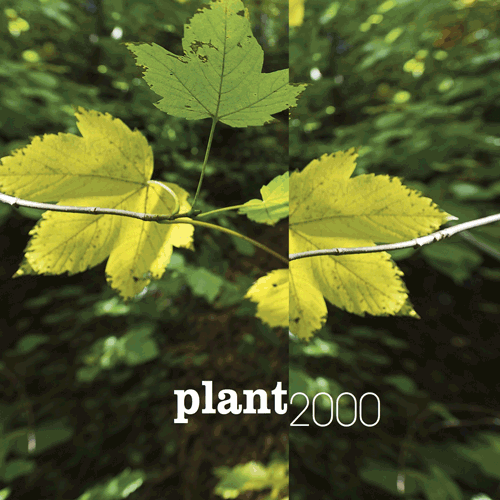 eNR088: plant by 2000
eNR088: plant by 2000
BAZE.DJUNKIII, Nitestylez.de (04/12/2018)
Put on the circuit as a label collaboration between Umland Records and El Negocito Records is "Plant", the first ever album released by 2000, a new evolution of Jan Klare's former band outfit 1000 which is now revived as a six member group - mostly due to the demand of bookers and festivals wanting them to make a return to the live circuit after one of their members left for New York city in 2017. Now, serving a bundle of twelve new tunes on this longplay piece, we see the sextet explore a deep, intimate feeling resembling the warmth as well as a live-and-direct touch usually provided by Chamber Music and stripped down Contemporary Classical arrangements whilst musically gravitating more towards a feeling of autumnal, late night Jazz Noir that gives room for sequences of Free Improvisation, large scale drama like in the epic "Toss", violent Free Jazz in "Rott" or even High Speed Funk affairs in the 125 second of "Shill" whilst "Teasy Venus" catches quite an easy, positive vibe on a classic Jazz standard note just too pick a few tracks out of this album that surely sets out to please quite a lot of Modern Jazz lovers out there.
 eNR080: Shifted by Sal La Rocca
eNR080: Shifted by Sal La Rocca
Pierre Dulieu, Dragon jazz La Sélection du Mois (29/11/2018)
Shifted est le quatrième disque de Sal La Rocca en leader ou coleader mais sa carrière de contrebassiste, actif depuis les années 80, l'a conduit à enregistrer d'innombrables albums depuis le lointain "Quartets" de Robert Jeanne sorti en 1992 sur le label B-Sharp aujourd'hui disparu jusqu'au quartet d'Anne Wolf capté live à la Jazz Station en 2015. Entretemps, le vétéran a joué avec le gratin de la scène jazz belge dans à peu près tous les styles de jazz moderne possibles. Ce nouveau disque a été réalisé en quartet avec quelques amis que Sal connaît bien : le saxophoniste Jeroen Van Herzeele qu'il a côtoyé dans le groupe Ode For Joe, le pianiste Pascal Mohy qui fut également son complice sur plusieurs projets dont sa précédente production (It Could Be The End en 2012) et le batteur Lieven Venken.
Le morceau éponyme en ouverture laisse entendre un combo énergique volontiers ouvert à un jazz libre. Jeroen Van Herzeele que l'on sait particulièrement à l'aise dans ce contexte avant-gardiste délivre ces envolées de ténor frénétiques dont il a le secret. Son jeu puissant et impétueux est admirablement soutenu par une rythmique en verve où brille un batteur dont le jeu est d'une grande intensité. Et les connaisseurs apprécieront tout autant son dialogue roboratif avec le tromboniste Phil Abraham sur Ragga.
Mais le quartet est une créature hybride qui peut aussi replonger dans la tradition et afficher un versant lyrique inattendu où s'illustre davantage Pascal Mohy. C'est le cas sur Bicycle, sublimé par une splendide improvisation mélancolique du pianiste. Fort de sa longue histoire faite d'expériences multiples, le contrebassiste fait le lien entre les deux mondes, cimentant les deux styles en une musique qui n'a rien d'hétérogène et certains morceaux comme Wise One offrent d'ailleurs les deux approches musicales entrelacées qui couvrent ainsi un large spectre d'émotions diverses. On y ajoutera encore le groove qui émerge à l'occasion comme sur Cache-Cash ou Ragga sur lequel Mohy substitue avec brio son piano électrique contre un Wurlitzer électrique.
Cette musique a une classe énorme qui n'est pas tombée du ciel : sa fluidité comme sa sophistication résultent non seulement des qualités individuelles des musiciens mais aussi de leur entente et de leurs échanges sublimés par une longue pratique commune. Vous voulez savoir comment le jazz se présente aujourd'hui ? Allez voir sur YouTube la splendide vidéo réalisée par Maël G. Lagadec pour le titre éponyme : l'image comme le son, en parfaite adéquation, séduisent et ont un impact considérable.
 eNR080: Shifted by Sal La Rocca
eNR080: Shifted by Sal La Rocca
Georges Tonla Briquet, Jazz'Halo (28/11/2018)
Tijdens Gent Jazz gaf Sal La Rocca de voorbije zomer een voorsmaakje van wat hij achter de hand hield. Dat hij met dit programma vanaf volgende week een Jazz Lab tournee aangeboden krijgt, gevolgd door een Jazz Tour van Les Lundis D'Hortense in januari, is niet verwonderlijk.
Veteraan Sal La Rocca (1961) verdiende zijn jazzsporen bij onder meer Toots Thielemans, Nathalie Loriers en Philip Catherine. Daarnaast was hij nooit te beroerd om af en toe vreemd te gaan in het popwereldje. Wat hij echter niet uit het oog verloor, was contact te onderhouden met de jongere generatie. Wie zo regelmatig aan zijn zijde opdook, was pianist Pascal Mohy, die trouwens ook al te horen was op La Rocca zijn vorige cd bij Igloo ('It Could Be The End', 2012). Deze tandem krijgt nu het gezelschap van drummer Lieven Venken en saxofonist Jeroen Van Herzeele.
'Shifted' is de titel van de openingstrack en meteen worden de pionnen razendsnel doorgeschoven tussen de vier spelers onderling. Ze zijn duidelijk niet de studio ingedoken om er een gezapig onderonsje van te maken. Na een korte peptalk neemt Van Herzeele het roer in handen en drijft de snelheid op. Een knallende opener zoals dat heet.
In scherp contrast volgt het introspectieve 'Waiting', gecomponeerd door Lieven Venken. Met een Van Herzeele die zich als een ware kameleon aanpast en heen en weer schuifelt tussen zijn drie metgezellen. Dat onderhuidse spanningsveld vinden we terug in het daaropvolgende negen minutenlange 'Psalm', een nummer van Van Herzeele. De meest spirituele kant van Coltrane weegt hier door. Met een Mohy die zich helemaal inleeft en er nog een extra dimensie aan toevoegt. Heel sterk allemaal en dan zijn we nog maar zeventien minuten ver.
In 'Cache-Cash' is het gasttrombonist Phil Abraham die Van Herzeele aanspoort tot nieuwe uitdagingen terwijl Mohy in 'Ragga' de kans grijpt om de piano in te ruilen voor een Wurlitzer. Een van de meest kubistische stukken. Op het programma tevens een hectische versie van 'Syndrome' (Carla Bley) aanvankelijk getekend door een hyper gedreven spel tussen bassist en pianist maar het duo wordt al snel bijgebeend door Van Herzeele en de continu aanwezige Venken.
Wie erbij was in Gent (waar Erik Vermeulen weliswaar de plaats innam van Mohy) weet ondertussen dat dit een kwartet is dat live heel elastisch te werk gaat en continu laveert tussen verschillende invalshoeken. Spannend over de ganse lijn.
 eNR080: Shifted by Sal La Rocca
eNR080: Shifted by Sal La Rocca
Jean-Pierre Goffin, L'avenir, p. 17 (27/11/2018)****
Sal La Rocca: basse de classe.
Hyperactif sur les s scènes belge et internationale depuis plus de trente ans le contrebassiste Sal La Rocca se sent aussi à l'aise dans le jazz traditionnel ou l'avant garde. L'album Shifted démontre combien son implication dans la musique est ouverte et sincère Il est entouré de quelques uns des meilleurs musiciens du moment: les bouillants Jeroen Van Herzeele au sax ténor, le vibrant Lieven
Vencken à la batterie et le raffiné Pascal Mohy au piano et wurlitzer mettent en valeur les compositions du leader avec
une énergie de tous les instants. Du grand jazz!
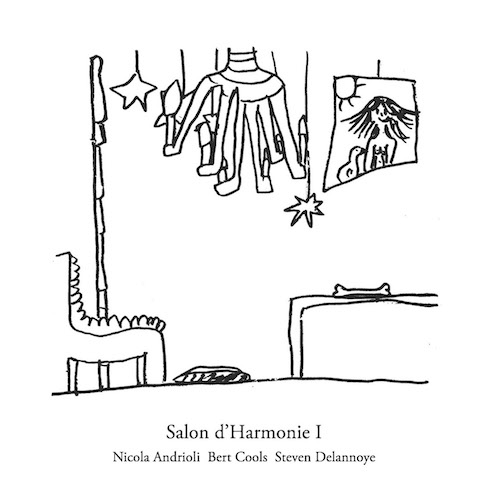 eNR087: Salon d'Harmonie I by Salon d'Harmonie
eNR087: Salon d'Harmonie I by Salon d'Harmonie
Georges Tonla Briquet, Jazz'Halo (23/11/2018)
Als vervolg op 'Dining In The Dark', de duo-cd van Steven Delannoye en Nicola Andrioli is er nu 'Salon d'Harmonie I' met als derde man Bert Cools. Meteen een andere en rijkere combinatie.
Met saxofonist Steven Delannoy, pianist Nicola Andrioli en gitarist Bert Cools heb je drie verschillende persoonlijkheden die duidelijk een gezamenlijke liefde kennen, namelijk deze voor melodie en harmonie. Ze illustreren dat in hun eigen projecten en de groepen waarin ze spelen. Voor 'Salon d'Harmonie I' doen ze dat nu ook samen. Delannoy componeerde al het materiaal met uitzondering van twee improvisatiestukken.
Acht nummers in totaal die aanvankelijk haast geruisloos in slow motion voorbijglijden. Nergens gaan ze overhaast te werk. Ze wentelen heel omzichtig om elkaar heen. Tot er onverwachts een melodielijn opborrelt. Ze tasten hun ontworpen basisstructuren steeds minutieus af, blijven wat hangen ter plaatse, gaan dan langzaam vooruit om terug te keren en de draad verder op te pikken waar ze begonnen, zij het met een nieuwe invalshoek.
De drie schuwen daarbij geenszins delicate experimenten zoals in 'Salon d'Harmonie #regermatic' en 'Salon d'Harmonie #seaside'. De fijnzinnige effecten van Cools verlenen het geheel een uiterst moderne wending. Electro-akoestisch zoals op de beste ECM-werken. Uitschieters zijn het dramatisch opgebouwde 'Choices In A Young Life' (puur Jakob Bro-materiaal) en de openingstrack 'One Chance' waarin ze van meet af aan al hun kaarten op tafel leggen. Heel sterk ook hoe Delannoye van tenorsaxofoon ingetogen overschakelt op basklarinet.
Bij de cd-voorstelling in de Jazzstation (21 november 2018) werd het aanwezige potentieel uitvergroot zonder de oorspronkelijke sfeer te verloochenen. De composities werden opengeplooid als ontluisterende "études". Invloeden van Ravel en Debussy waren legio evenals filmische stijlelementen. Muziek voor exquisiete salons waar hybride kamermuziek "bon ton" is.
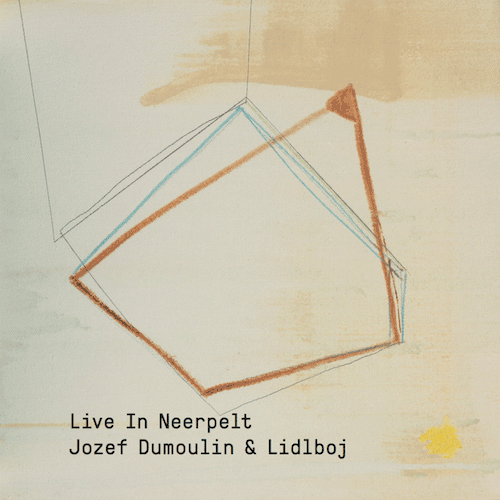 eNR070: Live In Neerpelt by Jozef Dumoulin & Lidlboj
eNR070: Live In Neerpelt by Jozef Dumoulin & Lidlboj
Herman te Loo, Jazzflits nummer 307 (19/11/2018)
We hebben in twee opzichten flink lang moeten wachten op dit nieuwe album van Lidlboj, de groep van de Belgische toetsenspeler Jozef Dumoulin. Het debuut van de band, 'Trees Are Always Right', dateert alweer van 2009 en de opname op de nieuwe cd werd gemaakt in januari 2011 in Neerpelt. El NEGOCITO Records moest dan ook flink aandringen voor Dumoulin akkoord ging met het uitbrengen van 'Live In Neerpelt'. Hij legt in de hoestekst uit waarom hij toch ja zei. Met de definitieve komst van zangeres Lyn Cassiers en de toevoeging van basgitarist Dries Laheye was het trio net uitgebreid tot een kwintet, en de leider had net zijn Fender Rhodes ingeruild voor een pakketje nieuwe keyboards. Dat geeft Lidlboj een beduidend andere groepsklank, en Dumoulin zegt veel van deze opname te kunnen leren voor de toekomst. Saxofonist Bo van der Werf legt zich meer toe op zijn akoesti- sche baritonsax in plaats van de elektronische EWI, die op de eersteling veelvuldig te horen was. Het trekt de balans tussen akoestische klanken en elektronica recht, en in de (veelal woordeloze) zang van Cassiers' lichte, meisjesachtige stem heeft hij een uitstekende melodiepartner. Ook trekt de blazer meer improvisatieruimte naar zich toe. De zware bas zorgt voor een invalshoek die elementen uit dubreggae ('Walk 3') en indie-rock wat meer onderstreept. De lounge- en dance-invloeden van het eerste album blijven aanwezig, net als het filmische karakter. We mogen dus blij zijn dat deze oude opname van de plank is gehaald. En het maakt natuurlijk nieuwsgierig naar waar Lidlboj nú staat.
 eNR068: s/t by FUNDAMENT
eNR068: s/t by FUNDAMENT
Stef Gijssels, Freejazzblog (10/11/2018) ****1/2
Belgian bass-player Peter Jacquemyn is probably best known for his collaborations with Evan Parker, Peter Kowald, André Goudbeek and free jazz musicians, usually in small ensembles. Now, he's taken on a more ambitious project, called "Fundament" (Dutch for 'foundation'), a composition/improvisation for instruments that play in the lower register.
The band are Peter Jacquemyn, Yannick Peeters, Kristof Roseeuw, Lode Leire, Pieter Lenaerts on double bass, Erick Sleichim on tubax, Jan Pillaert and Carl-Ludwich Hübsch on tuba, Matthias Muche on trombone, Gregoire Tirtiaux and Mathieu Lilin on baritone saxophone, and Peter Verdonck on bass saxophone. Several of the musicians add their vocal capacities, especially the leader who is versed in Mongolian tuva chanting. The band is unusual, to say the least.
Jacquemyn's endeavour is to bring something foundational, not only literally by creating a deep and overwhelming bass ensemble, but also at a deeper, spiritual level, namely to feel the vibration of life, feel the resonance in a real physical sense. I had to the pleasure to assist one of the performances in the Saint Jacob Church in Ghent, where the band occupied the larger part of the church floor and moved forward and backward, walking behind the massive pillars, come close the audience, and creating distance again, sometimes all together, sometimes with musicians moving in different directions according to a beautifully orchestrated choreography. This amazing physical aspect of the performance can of course not be experienced on this album, and that's a shame, really.
Below, I share two excerpts of the concert to give an idea of the performance. Recorded with iPhone, so apologies for the lack of quality and stability.
Back to the album: first, it has been quite a feat to capture the essence of the performance on record, even if you do not experience the full resonance of the space, you get dragged into this wonderful and special sonic universe, one that offers both the calming effect of single tone mantra-like bass voices with the more terrifying sounds of interjected screams or instruments. ... or the magnificent moment of complete distress on the short "Blow".
"Fundament B" is less linear than "Fundament A", and starts with a multitude of bowed basses conversing, in dark, ominous tones, as it evolves into a stop and go game between the basses and the trombone, or the collective versus the individual, until a much deeper groundswell by the horns takes over, in a strange contradiction of massive minimalism, something that is both solid and simple, but with enough variation to keep the tension going.
The album ends with "Earth", a monotonous chant with the whistling tuva sounds shimmering over deep bass voices, sounds that come from the core of the earth and connect us with the things on it, disrupted by savage growling sounds of Jacquemyn.
The album is not as strong as the actual concert - and how could it be? - yet it captures the essence well. It is offers an amazing listening experience, a work of art full of creativity, audacity, intelligence and something deeply foundational.
Don't miss it!
 eNR068: s/t by FUNDAMENT
eNR068: s/t by FUNDAMENT
Akim A.j. Willems, Cultuurpact (02/10/2018)
ZET DIE PLAAT AF!
"Moet dat zo luid?", brulde mijn vader telkens wanneer ik, bij het begin jaren '90, de versterker weer eens op 11 draaide om een plaat van Sonic Youth te beluisteren. Dat moest inderdaad. Want sinds hun passage in de Brielpoort wist ik: deze muziek moet je niet gewoon beluisteren, je moet die ook voelen en ondergaan. Daar had mijn vader geen oren naar. Er werd bij ons thuis dan ook al "Zet die plaat af!" geroepen toen BDW zijn broek nog sleet als rechtenstudent aan de univ van Antwerpen.
Een generatie verder is de muzikale verstandhouding tussen vader en zonen, voorlopig, iets beter op elkaar afgestemd: mijn oudste (6) vraagt regelmatig om "iets chills van Miles Davis" op te leggen en de jongste – hij werd het voorbije weekend 4 – kwam, terwijl ik "Fundament" (van Fundament) aan luisterbeurt twee of drie onderwierp, de bibliotheek binnen met de boodschap: "Papa, dit is écht een mooi muziekje. Echt wel."
Daar had de neerslag van mijn luisterervaring eigenlijk kunnen eindigen – meer complimenten heeft een cd/lp niet nodig – maar dan gaat de hoofdredactrice weer beweren dat ik er met mijn klak naar gesmeten heb. Dus zetten we de plaat nog maar eens op terwijl we u het volgende meegeven.
HOW LOW CAN YOU GO?
Ook de muziek van Fundament moet je eigenlijk – een project van tekenaar, beeldhouwer, performer en contrabasspeler Peter Jacquemyn – live beluisteren. Of beter: meemaken, lichamelijk gewaarworden, mentaal én fysiek doorleven. Maar met het volume hoog genoeg gaat deze verkenning van de lagere regionen van het klankenpalet – de bezetting: vijf contrabassen, twee tuba's, twee baritonsaxofoons, een bassaxofoon, een trombone, een tubax en een aantal stemmen/keelzangers – ook op cd of lp letterlijk door merg en been.
MASSAMUZIEK
"Fundament" is niet zomaar een cd of lp. Het is een uitnodiging. Om je open te stellen voor een vibrerende vorm die je tot in je kern kan raken, er je verbeelding en creativiteit masseert en je in staat stelt om de dingen anders te voelen en te zien dan ze zijn.
Fundament gaat voorbij het louter auditieve. De fysieke kracht van adem, adem waarmee blazers diepe, duistere geluiden uit instrumenten jagen, het vleselijke van handen en vingers die contrabassen betasten, strijkstokken die snaren strelen of geselen en ritueel trillende stembanden van (keel)zangers; het zijn vier ingrediënten die bij Fundament samengevoegd worden om geluidsgolven tot een stevige ruimtelijke geluidsmassa – waar de belever van de composities letterlijk in kan opgaan of onderduiken – te roerbakken.
MENU
Op de menukaart van "Fundament" staan vier verschillende roerbakschotels: "Fundament A", "blow", "Fundament B" en "earth".
Ze zijn allemaal om bij te watertanden, maar wij smulden het meeste van nummer 1 en 3: de ingrediënten waren helemaal naar onze goesting, afgemeten gewikt en gewogen zoals alleen chef-muzikanten dat kunnen, werden heel langzaam tot op hun ideale punt gegaard – "Fundament A" klokt af na ruim negentien minuten, "Fundament B" heeft iets minder dan een minuut minder nodig – en de porties zijn niet te groot en niet te klein. "blow" en "earth" waren ook niet slecht, maar eerder iets voor een klein hongertje.
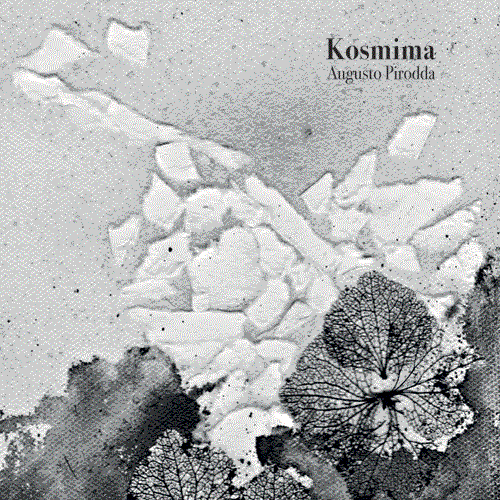 eNR081: Kosmima by Augusto Pirodda
eNR081: Kosmima by Augusto Pirodda
Ferdinand Dupuis-Panther, Jazz'Halo (20/07/2018)
Solokonzerte und -alben und Jazz – wie geht das zusammen? Fehlt es da nicht am Interaktiven, an der Befruchtung durch Mitspieler, an zirkulierenden Solos und Improvisationen? Gewiss, die Interaktion ist bei einem Pianisten wie Augusto Pirodda nur eingeschränkt möglich, nämlich zwischen der linken und der rechten Hand. Zudem sind die Klangfarben stark reduziert. Wo bleibt das rhythmische Element, wo das melodische? Wie verhält es sich mit der Basslinie? Nun ja, es gibt ja auch basslose Trios, sodass das nicht so sehr das Problem sein dürfte. Doch lassen wir uns einfach auf Pirodda ein und sehen, in welcher Weise er sein Tasteninstrument ins Spiel einbringt.
Bis auf "Between" und "Crystal Waltz" stammen alle anderen Kompositionen wie "Kosmima", "Jompro", "Brootprints", "Alter Ego", "Bollad" und "Bass Thing" aus der Feder von Augusto Pirodda.
Im Pressetext zum Album lesen wir: "Augusto Pirodda plays solo, to the rhythm of his piano, and makes this intensely poetic and fascinating journey. He constantly searches for new ideas, avoids stereotypes and stylistic barriers. Like a tightrope walker, he moves effortlessly between jazz and free improvisation. Augusto Pirodda is known from his trio with Gary Peacock and Paul Motian and his quartet with Ben Sluijs, Marek Patrman and Manolo Cabras." Mit Letzterem hat der aus Italien gebürtige, nunmehr in Brüssel und den Niederlanden lebende Pirodda zusammen den Titel "Between" komponiert.
Langsam, wie ein Rinnsal fließend, kommt "Kosmima" daher. Hier und da muss ein kleines Hindernis umschifft werden, so der Eindruck. Ein Blatt fällt ins Wasser und Kreise bilden sich auf der Oberfläche – so ein mögliches anderes Bild im Kopf, wenn man den Melodielinien folgt. Stark im Bass ruht "Jmpro", eine Komposition, die zudem von Behäbigkeit geprägt ist und sich nach und nach aus der Bassverharrung löst, um nachfolgend wieder in den Basslauf zurückzugleiten. Entgegen der Erwartung, dass es eine ausgeprägte Interaktion zwischen linker und rechter Hand gibt, dass es starke Akzente zwischen beiden Händen gibt, ein "kontrapunktisches Agieren", ist das bei diesem Stück nicht der Fall, eher schon bei "Brootprints". In diesem Stück hinterlässt Pirodda nachhaltige Fußspuren, eher schon Stiefelabsätze.
Verspielt zeigt sich "Alter Ego". Dabei tanzt die eine Linie über der anderen. Es kommt zu einer Art klangbildlicher Helix. Auffallend und nachhaltig im Gedächtnis haften bleibt die sehr starke Basshand, die ihre Dominanz nur selten aufgibt. Wie mag wohl ein dunkles Vorspiel klingen, siehe "Dark Prelude"? Gar nicht so, wie erwartet. Verhalten und zögerlich entwickelt sich das Stück; so, als wolle der Komponist herbstliche Nebelbänke einfangen, klingt das, was er uns zu Gehör bringt. Zugleich hat man den Eindruck, das Zurren des Windes an den kahlen Baumästen werde als Klangbild expressiv gezeichnet. Zudem meint man, einigen durch den Regen stapfenden Menschen zu begegnen, die sich dann schließlich rasch davonmachen. Nein, im Diskant verliert sich der "Crystal Waltz" nicht, und auch von Walzer ist nicht zu merken. Mit "Between" beschließt Pirodda sein Soloprojekt und taucht dabei tief in die Basslinien ein, die er allerdings kurzzeitig auch aufzulösen versteht.
Um auf die Anfangsfragen zurückzukehren: Es fehlt schon am Interaktiven, an dem Zipp und Zapp, das bei Trios und Quartetts möglich ist. Die Beschränkung auf das Piano setzt halt starre Grenzen, wenn man das Piano nicht präpariert oder durch Elektronik manipuliert, was Pirodda allerdings unterlässt.
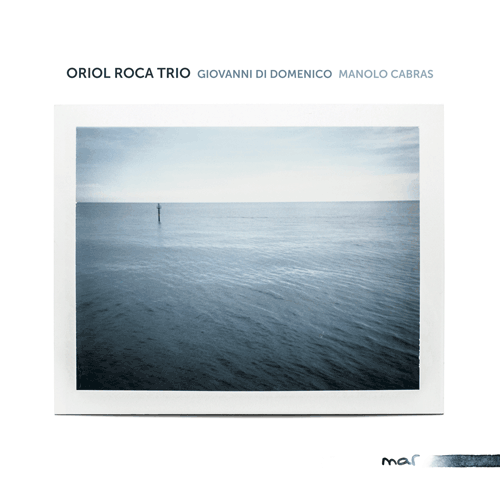 eNR067: Mar by Oriol Roca Trio
eNR067: Mar by Oriol Roca Trio
Georges Tonla Briquet, Jazz'Halo (16/07/2018)
De concertactiviteiten in de Brusselse Studio Grez mogen dan op een laag pitje branden, af en toe worden er gelukkig nog opnamen gemaakt zoals deze 'Mar' van een trio rond de Spaanse (Catalonië) drummer Oriol Roca (drums) en twee vaste Italiaanse waarden met vaste stek in Brussel, Giovanni Di Domenico (piano) en Manolo Cabras (contrabas). Meteen drie protagonisten uit de Europese improvisatiescene.
Roca schreef vijf nummers terwijl zijn twee medemuzikanten eveneens elk een inbreng leverden. Je luistert naar een aaneenschakeling van mijmeringen waarbij de drie heel ingetogen en poëtisch te werk gaan. De magnetiserende en uiterst minimalistische werkwijze leidt tot een haast mystieke luisterbeleving waarbij elk gevoel van tijd en ruimte verdwijnt.
Verrassende luistertrip.
 eNR081: Kosmima by Augusto Pirodda
eNR081: Kosmima by Augusto Pirodda
Georges Tonla Briquet, Jazz'Halo (16/07/2018)
De Brussels-Italiaanse pianist bracht al een eerste soloplaat uit in 2007 ('Moving'). Voor de tweede keer trok hij een studio in om zonder begeleiders een opname te maken. Daartussen waren er wel een aantal releases in kwartet evenals de trio-cd met Gary Peacock en Paul Motian ('No Comment').
'Kosmima' bevat veertien muzikale polaroids, hoofdzakelijk badend in vale tinten. Opvallend hoe hij soms heel beredeneerd en haast in slow motion de linkerhand aanwendt om subtiele accenten te leggen zonder uit te monden in ritmisch geweld. In schril contrast met al de rest is er 'Thrilling', meteen de gepaste titel bij het meest spannende moment.
Soundtrack voor een poging tot onthaasting.
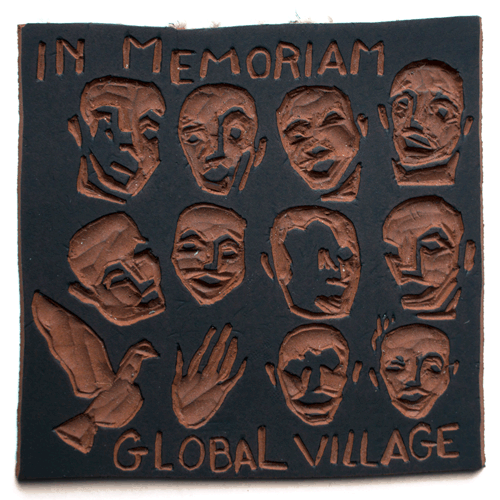 eNR069: in memoriam global village by Gunda Gottschalk, Xu Feng Xia & Peter Jacquemyn
eNR069: in memoriam global village by Gunda Gottschalk, Xu Feng Xia & Peter Jacquemyn
Georges Tonla Briquet, Jazz'Halo (04/07/2018)
Voor wie zich eens wil wagen in de Bermuda driehoek gevormd door hedendaags klassiek, Chinese avant-garde en improvisatie met een punkrandje, tippen we op deze opname. Drie snarenspelers elk met hun instrument (viool, ghuzeng, contrabas) zoeken toenadering vanuit verschillende invalshoeken. Er ontspint zich een wirwar van denkpistes maar als echte sjamanen weten de drie steeds een remedie te vinden. Onwillekeurig duiken beelden op uit de film 'Die Blechtrommel'. Om maar te zeggen dat dit zeker niet de soundtrack is van een onderhoudende gezinskomedie.
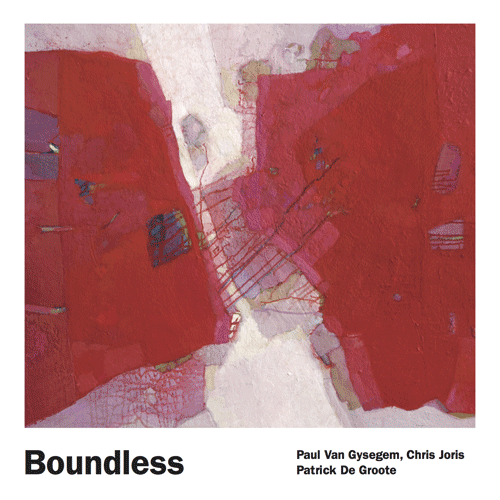 eNR065: Boundless by Patrick De Groote / Chris Joris / Paul Van Gysegem
eNR065: Boundless by Patrick De Groote / Chris Joris / Paul Van Gysegem
Georges Tonla Briquet, jazzenzo jazzmagazine (27/06/2018)
Nu de Parijse studentenrevolte van mei 1968, die voor een culturele omwenteling zorgde, na vijftig jaar weer in de culturele actualiteit staat, krijgt de Vlaamse contrabassist en beeldend kunstenaar Paul Van Gysegem hopelijk opnieuw wat meer aandacht. Met twee uitgaven die wat onder de radar bleven, is daar alle reden voor.
Van Gysegem was er bij sinds begin jaren zestig. De nieuwe stromingen, avant-garde, free jazz en performances, hij stond telkens op de eerste rij. Een halve eeuw later blijkt hij nog steeds genoeg ideeën te hebben.
Voor 'Boundless' trok hij binnen een jaar drie dagen de studio in samen met percussionist Chris Joris en compagnon van het eerste uur trompettist Patrick De Groote, om vier trio-stukken en vijf duo's in te blikken. Afhankelijk van de data is Joris te horen op drums, percussie, ngoma handtrom en zelfs piano terwijl De Groote het houdt bij trompet en flugelhorn. Van Gysegem blijft trouw aan zijn contrabas.
Echt voorbereidend werk was er niet. Wel hadden de drie hun bagage van jarenlange ervaring als improviserende muzikanten. De negen nummers noemen ze dan ook geen composities maar 'instantaneous improvisation'. "Een wonderbaarlijke reis, tegendraads, terwijl duizenden klankflarden de hemel vullen met nieuwe geluiden, tekens en eeuwige gebaren," aldus Van Gysegem.
Het zijn verhalen die je als luisteraar het beste zelf ontdekt. Afhankelijk van je achtergrond duiken beelden en percepties op. De zacht zoemende geluiden, de krachtige stroomstoten, de alliteratie van noten, de korte solomomenten, de chaotische climax, het zijn aanleidingen om je fantasie te stimuleren. Een handleiding krijg je niet van deze heren. Het is genieten, elk op zijn eigen manier.
Je kan het ook vergelijken met een hoorspel waarbij de drie hoofdpersonages afwisselend overleggen, filosoferen, met elkaar in de clinch gaan om uiteindelijk toch steeds tot een vergelijk te komen. Imponerend hoe ze telkens weer samen convergeren naar eenzelfde punt.
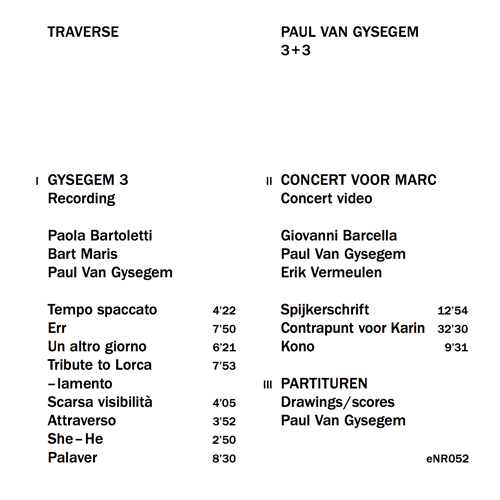
 eNR052: Traverse by Paul Van Gysegem 3 + 3
eNR052: Traverse by Paul Van Gysegem 3 + 3
eNR065: Boundless by Patrick De Groote / Chris Joris / Paul Van Gysegem
Peter Van Laarhoven, United Mutations (24/06/2018)
Two years ago, the Belgian Negocito record label released two trio concerts by artist, painter, sculptor, double bass player Paul Van Gysegem.
Actually, it was one album that consisted of one CD (Paola Bartoletti, Bart Maris and Paul Van Gysegem) and one DVD (video recording with Giovanni Barcella, Eric Vermeulen and Paul Van Gysegem). Two beautiful concerts in one package.
Last year, Negocito Records added another fine release to Paul Van Gysegem's discography.
This time, the ensemble is made up of percussionist Chris Joris, trumpet player Patrick De Groote and Paul Van Gysegem on double bass.
All three musicians are well-known in the Belgian free jazz / improvised music scene. Paul De Groote even played with Paul Van Gysegem on his "Aorta" album in 1971 !!
For "Boundless", the trio got together for three separate days. One in November 2015, one in May 2016 and one in August 2016.
The result is an impressive, energetic album on which the musicians explore and communicate. Boundless, if I may say so.
Recommended listening.
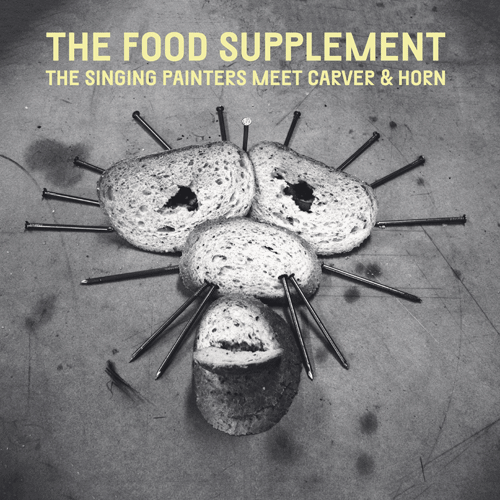 eNR056: The Food Supplement by The Singing Painters Meet Carver & Horn
eNR056: The Food Supplement by The Singing Painters Meet Carver & Horn
Georges Tonla Briquet, Jazz'Halo (01/06/2018)
Een plaat die tot nu toe niet echt de aandacht kreeg die ze verdiende. Dat het om de registratie gaat van een live improvisatieconcert, heeft daar waarschijnlijk een en ander mee te maken. Voor de liefhebbers nochtans een absolute aanrader.
Het verhaal van The Singing Painters begon twintig jaar geleden met Laura van (vocals), Michaël Borremans (!) op gitaar en Merlyn Paridaen als drummer. Na wat meningsverschillen en personeelswissels werden knopen doorgehakt en ontstond The Singing Painters Meet Carver & Horn met nog steeds Laura van en Merlyn Paridaen, nu in gezelschap van Bart Maris, Peter Jacquemyn en Mathias Van De Wiele.
Op 28 mei 2016 kwamen ze samen in Croxhapox (Gent), lieten alle remmen los en improviseerden voluit. Duidelijk een memorabele avond waarop ze allemaal in topvorm verkeerden. Er wordt constant gedialogeerd en uitgedaagd maar telkens met het besef waar de limiet ligt wanneer het geen zin meer heeft om over een bepaald punt verder te redetwisten.
De openingstrack klinkt alsof de mannen van Monty Python verdwaalden in improvisatieland. Meteen al een heel extreme introductie. Van hieruit gaat het steeds harder en rauwer maar telkens ook met respect en aandacht voor elkaar. Er gebeurt zoveel dat het onmogelijk is om hier alles te beschrijven. Vooral Bart Maris en Mathias Van De Wiele gingen er helemaal voor terwijl de fulminante vocalen van Laura van hartverscheurend weerklinken.
Een amorfe geluidssculptuur en meteen ook een krachtig en provocerend statement volledig volgens de visie van el NEGOCITO.
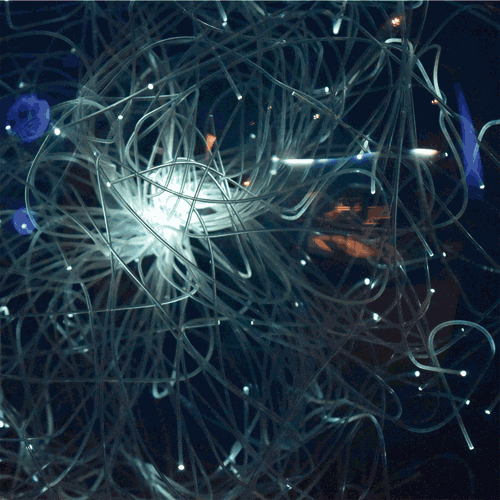 eNR064: The Ear Cannot Be Filled With Hearing by Giovanni Di Domenico & Abschattungen
eNR064: The Ear Cannot Be Filled With Hearing by Giovanni Di Domenico & Abschattungen
Georges Tonla Briquet, Jazz'Halo (26/04/2018)
De ene bigband is de andere niet maar de shapeshifters van Giovanni Di Domenico & Abschattungen vormen echt wel een buitenbeentje.
Toetsenist Giovanni Di Domenico is een van de spilfiguren uit de alternatieve improvisatiescene in Brussel. Hij is tevens een all round muzikant en producer en heeft zijn eigen label, Silent Water. In 2017 was hij gelinkt aan zomaar liefst negen releases met als meest opmerkelijke zijn soloplaat 'Insalata Statica'.
Wat 'The Ear Cannot Be Filled With Hearing' betreft, stond hij in voor productie, opname, mixing, hoesfoto en leverde hij alle composities (vier in totaal, twee langs elke plaatkant).
Kant A begint met 'Infra-Thin' (12'43). Uit de nevelen van het fifties sciencefiction decor duiken langzaam piano- en drumklanken op waarna een mini big bang in slow motion ontstaat. Laag na laag wordt een andere dimensie opgebouwd.
'Tugkanon & Lekton' (8'03) is van een andere planeet. Poëtische pianonoten met aansluitend intimistische trompetklanken leiden geleidelijk aan tot een cocon van stilte die heel subtiel doorbroken wordt door allerlei kleine (wah wah)effecten. Het lijkt een spel van losse pionnen die zich willekeurig verplaatsen maar elkeen houdt zich duidelijk aan welbepaalde spelregels. Frontale confrontaties worden vermeden, het is vooral een techniek van steeds verder uitdiepen en aftasten.
Op Kant B is 'Instruments Of Darkness' (9'41) de eerste titel. Een licht psychedelische groove vervliegt na zowat een halve minuut en de luisteraar belandt opnieuw in een wereld van spielereien en bizarre kronkels. De piano levert een kort interludium waarna het puzzelwerk verdergezet wordt.
Alles eindigt met 'Apophenia' (10'58) in een rustig Oosters sfeertje met wat vocalen en dwarrelende pianonoten. Om uiteindelijk te belanden bij een gelijkaardige chaos van het begin.
Di Domenico deed wat Ellington ooit zei: "Een goede compositie begint bij de keuze van de juiste muzikanten." Met onder meer Laurent Blondiau, Daniele Martini, Giotis Damianidis en Jordi Grognard koos hij dan ook topmuzikanten uit de Brusselse scene.
Waaronder klasseer je nu dit alles? Metafysisch gestructureerde freejazz met een knipoog naar zowel Pink Floyd als Frank Zappa? Of een fascinerende "loop" al even complex en buitengewoon als deze waar de kinderen van Miss Peregrine in ronddolen? Ideale soundtrack dus om er de trilogie van Ransom Riggs ('Miss Peregrine's Home For Peculiar Children') bij te lezen. Zeker ook voor fans van Miles zijn 'Bitches Brew' (de vierdelige cd-box). Kortom, "mood music" boordevol modulaire wendingen. Di Domenico zelf citeert graag 'Lanquidity' van Sun Ra en het Italiaanse collectief Gruppo di Improvvisazione di Nuova Consonanza als inspiratiebronnen.
 eNR069: in memoriam global village by Gunda Gottschalk, Xu Feng Xia & Peter Jacquemyn
eNR069: in memoriam global village by Gunda Gottschalk, Xu Feng Xia & Peter Jacquemyn
Le Vif Focus (26/04//2018)
Gunda Gottschalk (violon, alto, voix), Xu Feng Xia (guzheng, voix) et Peter Jacquemyn (contrebasse, voix) forment un trio né de la fréquentation de l'un des grands contrebassistes de l'Histoire du jazz et de la musique improvisée. Personnalité charismatique, pédagogue inspiré, Peter Kowald a été le maître informel et bienveillant de nombreux musiciens qui perpétuent aujourd'hui, pour les plus créatifs, l'esprit plutôt que la lettre de la free music. Ce disque, réunissant trois de ses disciples, tous improvisateurs de haut vol, est un splendide hommage au disparu (en 2002, à 58 ans), décliné en douze parties (en duo, trio et solo) d'une qualité musicale née de l'extrême attention que chacun porte à l'autre. Splendide et incontournable.
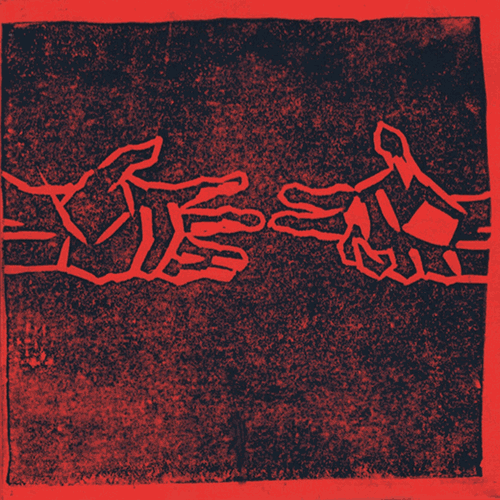 eNR066: Non É Prohibito by duo Periculoso
eNR066: Non É Prohibito by duo Periculoso
Le Vif Focus (26/04//2018)
Tous deux élèves (libres) et partenaires de Peter Kowaltd (de son vivant le plus grand des bassistes free de la scène européenne avec l'Anglais Barry Guy), Gunda Gottschalk (violon, alto, voix) et Peter Jacquemyn (contrebasse, voix) se sont naturellement associés après la disparition du maître au sein d'un duo (et parfois d'un trio, en compagnie de l'accordéoniste Ute Volker) dédié à la liberté musicale. Qui a déjà eu l'occasion de voir Jacquemyn sur scène n'a pu qu'être bluffé par l'incroyable débauche d'énergie dont il fait montre dans un corps-à-corps constant avec sa contrebasse dont il sort des sons inouïs. Entre musique et happening, ses performances ne sont pourtant jamais aussi étincelantes que lorsqu'il joue avec Gunda, son âme soeur, leurs rencontres, toujours empreintes d'une grande musicalité, fusionnant musique contemporaine, bruitisme, jazz et, surtout, improvisation libre. Ce disque en constitue la démonstration parfaite à travers un voyage ( Viaggio) décliné en séquences servies par une belle prise de son. Les deux musiciens, qu'ils jouent de leurs instruments ou utilisent, parcimonieusement, la voix -de gorge et proche des polyphonies mongoles pour le contrebassiste- se situent, ici, au sommet d'un talent collectif éclatant et quasi télépathique.
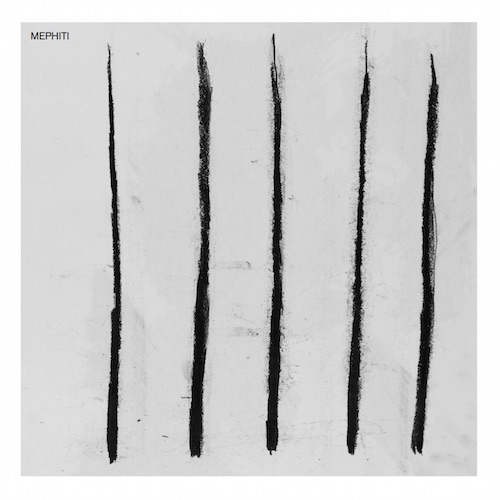 eNR082: s/t by Mephiti
eNR082: s/t by Mephiti
Eyal Hareuveni, Salt Peanuts (22/04/2018)
Mephiti is a new Belgian sextet, led by alto sax player Erik Bogaerts, known from local groups as Llop and Les Chroniques de l'Inutile. With Mephiti, Bogaerts suggests a set of dreamy and lyrical textures that rely on the unique interplay of guitarists guitarists Bert Cools, on semi-acoustic and electric guitars and synthesizer, and Ruben Machtelinckx, on the electric guitar; complemented with the zither-like, string instrument, Kanklės, played by Lithuanian musician Indrė Jurgelevičiūtė, the solid double bass of Brice Soniano and the rustling game of drummer Stijn Cools gives it all a wayward edge.
Mephiti self-titled, debut album was recorded on December 2016 and released as a limited-edition of 300 vinyls plus digital download options. The impressive artwork draws from Dewi De Vree & Jeroen Uyttendaele work 'Ground', an audiovisual performance in which graphite drawings are used as a control interface for several electronic instruments.
The suggestive artwork captures beautifully the atmosphere of Mephiti music, flowing with a strong melodic sensibility, nuanced, thoughtful and earthy. The guitars, kantele and the bass anchor the lyrical theme while Bogaerts' breathy sax soars above and Stijn Cools drums color this melody with light touches. The string instruments offer a light, breezy West-African vibe on «Hymne I», that allow Bogaerts and Stijn Cools to dance with, and an enigmatic, cinematic-like, minimalist pulse on «Hanneke» and «Krevelstraat».
Jurgelevičiūtė opens the second side with the folky meditation «Hymne II». Llater its peaceful, melodic theme is expanded by the distant guitars of Machtelinckx and Cools and the caressing sax of Bogaerts. «Lenaé» deepens this pastoral, lyrical vein and captures it in a gentle-swinging song. «Oude steenweg» is a surprising, exceptional texture in this album, with its ritualistic, resonant pulse of the drums and bass, but the last piece, «Kat kreupel» captures again the dreamy, comforting spirit of this promising group and album.
 eNR065: Boundless by Patrick De Groote / Chris Joris / Paul Van Gysegem
eNR065: Boundless by Patrick De Groote / Chris Joris / Paul Van Gysegem
Bernhard Oskar, Spielhaltungen, angespielt #001 (28/03/2018)
Gemein mit anderen Prozessen sozialer Interaktion ist der Dynamik der freien Gruppenimprovisation die Anlage, infolge fehlenden gemeinsamen Vokabulars und divergenter Persönlichkeitsmerkmale zu ausweglosen Spannungen und voneinander getrennten Sphären, anstatt zu einem homogenen Ganzen und musikalischem Einvernehmen zu führen. Wenngleich unauflösbare Konflikte zweifelsfrei in außerordentlich reizvollen Hörereignissen münden können, stellt die Emergenz eines spontanen Gruppenkonsens immer einen Vorgang besonderer Qualität dar.
Auch wenn sich für das Gelingen eines solchen Einklangs mit Sicherheit kein allgemeingültige Leitfaden formulieren lässt, so ist wohl unwiderlegbar, dass ideale Kommunikatonssituationen zumindest als Katalysator eines solchen fungieren.
Dies verdeutlicht der hier stellvertretend für das Album "Boundless" angespielte Titel "Talking" auf nahezu paradigmatische Art und Weise.
Es mag der Reife der international zu wenig rezipierten Belgier geschuldet sein – Bildhauer und Bassist Paul Van Gysegem, der seine Wurzeln im Free Jazz der 1960er Jahre hat, Trompeter Patrick De Groote, der ab 1966 Ensemblepartner in Van Gysegems Sextet war und Percussionist Chris Joris, ebenfalls bereits in den 1960er Jahren an der Seite von Fred Van Hove spielend – dass es ihnen die Herstellung eines solchen idealen kommunikativen Rahmens, der den Partnern notwendige Freiräume öffnet und zugesteht, die feine Balance zwischen Ab- und Unabhängigkeit hält und allen Ensemblemitglieder gleichberechtigte Teilhabe garantiert, scheinbar mühelos gelingt — jedenfalls verdichten sich die individuellen Erfahrungsschätze und Präferenzen der beteiligten Akteure über die Spieldauer des Albums zu einem geteilten musikalischen Idiom, das die titelgebende Grenzenlosigkeit weniger als Unmaß nebeneinander stehender ästhetischer Spezifika erscheinen, sondern als Potential eines offenen, partizipativen Kommunikationsrahmens begreifen lässt."
 eNR065: Boundless by Patrick De Groote / Chris Joris / Paul Van Gysegem
eNR065: Boundless by Patrick De Groote / Chris Joris / Paul Van Gysegem
Stef, The Free Jazz Collective (26/03/2018) ****½
This review was long due. A fantastic trio album that's been listened to dozens and dozens of times during traffic jams, during smooth traffic and at home, with more time and attention. And attention and time is what this music deserves. It's a set of nine tracks of free improvisation between Belgium's veteran jazz musicians.
Paul Van Gysegem plays bass. He is a visual artist - both painter and sculptor - and a musician with roots going back to the early free jazz period in the 60s, including the organisation of avant-garde festivals. Van Gysegem released "Aorta", his first sextet album, already in 1971. He played with Lacy and Waldron, and of course also with Fred Van Hove, Belgium's first real avant-garde improv pianist. Chris Joris is a percussionist, pianist (as on some tracks on this album) and educator, incredibly knowledgeable about African rhythms and instruments. Patrick De Groote plays the trumpet. Again, he's not very well known internationally, but he was already a member of the above mentioned sextet in 1971. Together, they are around 220 years old.
Some fifty years later, they meet again to deliver this wonderful album of freely improvised pieces, four in trio format and five duets between trumpet and bass. It is exceptional for a number of reasons. First, the music is solid: determined, open-ended, sensitive, respectful, crisp, creative. Second, this is today's music, and very much so: little stories evolve with only one purpose: to co-create quality music in the moment. No need for structure or patterns, just interactive explorations that each remain focused and coherent. Third, it is so full of energy and joy: you can feel how the musicians like it themselves. There is nothing 'tired' here, quite to the contrary, it's fresh, young in spirit and approach. It doesn't sound like their zillionth performance. It sounds like they're full of enthusiasm to start something new. Fourth, it's incredibly entertaining too. Despite the limited line-up, ideas abound, and the high quality is maintained throughout. And fifth, the sound quality is also very good.
It is boundless, as its title suggests. And what a pity that their published output is so limited."
 eNR082: s/t by Mephiti
eNR082: s/t by Mephiti
Joseph « YT » Boulier, Jazzaroundmag.com (20/03/2018)
Le concept Mephiti s'articule autour du saxophoniste gantois Erik Bogaerts, par ailleurs leader au sein de la formation de jazz ambient Llop. La musique de ce sextet atypique (outre le saxophone et la section rythmique, on note la présence de deux guitaristes et d'une harpiste) se meut doucement, par petits pas et par petites touches, dans un climat quasiment dub, chuchotant l'éloge de la lenteur. On imagine facilement chaque musicien, recroquevillé et concentré sur son instrument, dont il tire des sons personnels qui construiront patiemment l'édifice. Ici, il n'y aura aucune envolée. La section rythmique est volontairement discrète, les soli d'Erik Bogaerts sont soufflés tout en retenue. La musique de Mephiti, aussi belle soit-elle, ne se vit pas : elle se subit, en ce sens qu'elle exige de l'auditeur un lâcher-prise profond.
 eNR066: : Non É Prohibito by Duo Periculoso
eNR066: : Non É Prohibito by Duo Periculoso
Ian Patterson, All About Jazz (13/03/2018) ****
The collaboration between violinist Gunda Gottschalk and bassist Peter Jacquemyn dates back to 1995, with the duo expanding to a trio in the live arena with the addition of accordionist Ute Völker. Non é Prohibito (el NEGOCITO Records, 2017) is only the duo's second recording and comes eighteen years after E Pericoloso Sporgersi (Valve Records, 1999). It's undoubtedly a hefty gap, although both musicians are busy in multiple settings -Jacquemyn most frequently in ensembles with alto saxophonist/bandoneon player André Goudbeek, and Gottschalk in the quintet Partita Radicale. As on their debut recording, Gottschalk and Jacquemyn once again dive headlong into entirely improvised dialog, with striking results.
The seven viaggi—or journeys—stem from free-jazz, an arena well familiar to both: Jacquemyn has played with the likes of Michael Moore, Tony Oxley, Peter Kowald and Barre Phillips, while Gottschalk's collaborations include guzhêng player Xu Feng Xia, William Parker, Susie Ibarra and Fred Frith. It's hardly surprising, therefore, that these improvisations are so fiercely uncompromising. In addition to violin, Gottschalk also attacks the strings of a viola, though only occasionally, on the most lyrical interludes, is it possible to distinguish the one from the other. Jacquemyn, in the main, works his bow, and both musicians employ wordless vocals, from nasal drone to something akin to a guttural, monastic mediation. Such articulations, however, are sparingly aired.
The pizzicato spluttering and sawing bowed bass of "Viaggio I" combine with frenetic energy and nerve-shredding effect like the soundtrack to some dystopian nightmare. Much of the music throughout is discordant and angular, the duo's healthy disregard for convention resulting in sounds that are, as on "Viaggio ii," evocative in turn of creaking wood, didgeridoo and animalistic mewling and growling. This is music, above all, that works on the nerves, emotions and one's imagination. For Gottschalk and Jacquemyn, as the album title suggests, nothing is out of bounds. There are also passages of quietly spun reverie, although the softly voiced interplay at the outset of the sixteen-minute "Viaggio iii" gradually evolves into a lunatic jig, the faintly sketched melodic lines themselves dissolving into more abstract sounds that maintain a tension, though not an easily discernible form, until the end.
Gottschalk and Jacquemyn embark in tandem, if not quite in unison, on "Viaggio iv," the arresting harmonics of their boldly interweaving lines repeatedly punctuated by islands of silence. The duo's maze-like paths are entirely unpredictable, though the very real sense of mutual purpose never diminishes as they spur each other on. The fractured narrative of "Viaggio v" is a tale of shifting moods. Beginning with a musical tit-for-tat, the duo exchanges staccato phrases like children's teasing mimicry; the soundscape then changes to urgent, car-horn brashness before the duo finds harmony in a gentle, melodic fade-out.
"Viaggio vi" a scratchy, fidgety affair, sees Gottschalk gravitate towards the violin's upper registers as Jacquemyn heads the opposite way with his bass. The duo signs off with "Viaggio vii," arguably the album's most atmospheric improvisation. Here, viola and bass carve out overlapping drones, Jacquemyn's barely wavering as Gottschalk's own evolves into a dark melody that compounds the sinister ambiance.
Non e Prohibito is an intense, challenging and liberating sonic journey, akin to passing through ever-changing scenery of an imaginary world. Thrilling and surprising in equal measure, it's also just a little disorienting. For those prepared to stay on board for the duration, however, and then willing to revisit Gottschalk and Jacquemyn's brave sonic world, the results are uniquely stimulating.
 eNR082: s/t by Mephiti
eNR082: s/t by Mephiti
Dave Sumner, The Best Jazz on Bandcamp: February 2018 (07/03/2018)
If there's a takeaway to this enchanting album from Mephiti, it's that there are countless ways to expressing a state of serenity. There's the melodic sigh of "Shilly," the raindrop pulse of "Hymne I," the emerging sunrise of "Hanneke," and the descent into night of "Krevelstraat." Mephiti swings between tranquility and liveliness; occasionally, it feels like a reinterpretation of Bill Frisell's dreamier solo projects. The quintet is rounded out by alto saxophonist Erik Bogaerts, guitarist Ruben Machtelinckx, guitarist Bert Cools, double bassist Brice Soniano, and Indrė Jurgelevičiūtė on kantele (a five-stringed instrument that possesses the grace of a harp and the punch of a kora).
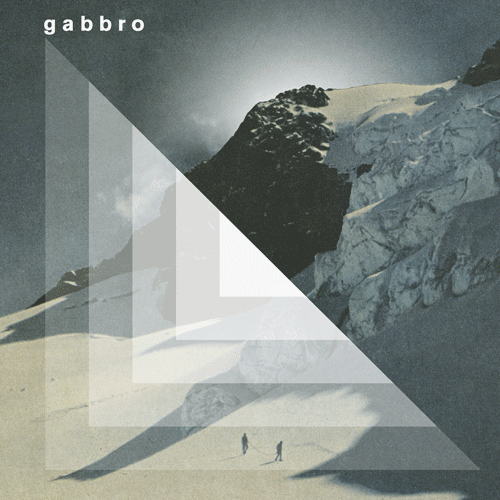 eNR060: s/t by g a b b r o
eNR060: s/t by g a b b r o
Jean-Claude Vantroyen, Mad, Le Soir (07/03/2018)
Le gabbro est une roche plutonique magmatique, à texture grenue. On l'utilise comme pierre de taille. Ou pour en faire des brise-lames. Le nom du duo composé de deux saxophonistes barytons, Hanne De Backer et Marc De Maesener, est donc bien pensé. Leur musique est grenue comme de la pierre et renvoie à des âges géologiques, quand le gabbro se formait : plaintes, explosions, silences, cris et tourbillons, orages et cataclysmes. Mme Hanne et M. Marc explorent outre les possibilités sonores et chromatiques du bary- ton et créent un dialogue improvisé. Sur la base traditionnelle du jazz et du free-jazz, mais en s'en échappant aussi parce qu'il faut exploser les structures, ce qui lui donne une atmosphère réso- lument contemporaine et profonde. Maintenant, c'est vrai, il faut aussi parfois s'accrocher. Mais laissez-vous aller, rentrez dans les vagues de cette musique et vous serez fascinés.
 eNR069: in memoriam global village by Gunda Gottschalk, Xu Feng Xia & Peter Jacquemyn
eNR069: in memoriam global village by Gunda Gottschalk, Xu Feng Xia & Peter Jacquemyn
Felix, eine von vier best-of-cds der Monate März/April, freiStil #77 Österreich (03/2018)
Saiteninstrumente in allen Kombinationen, Stimmungen, Schattierungen, dynamischen, rationalen und ekstatischen Zuständen werden von Gunda Gottschalk, Xu Feng Xia & Peter Jacquemyn zu Ehren der großen Musikerpersönlichkeit Peter Kowald ins Glühen versetzt, ihre Inspiration ins Blühen. Kowald, der unvergessene Kontrabassist, hatte bekanntlich in Wuppertal den "Ort" als internationalen, international beachteten Kunstumschlagplatz etabliert und mit Musizierenden so gut wie aller Herkünfte und Vorbildung das "Global Village" als offenes Orchester formiert. Gottschalk & Feng Xia waren – wie schon Holger Pauler in freiStil #74 im Gottschalk-Porträt herausarbeitete – seit jeher im "Ort"szentrum daheim, Kowalds Instrumentalkollege Jacquemyn stieß später dazu und hat fürs Booklet bzw. den Innenteil des vorliegenden Tonträgers eine so intelligente wie berührende Würdigung des Gründervaters verfasst. Er versinnbildlicht die Offenheit Kowalds beispielhaft an den Stilrichtungen, aus denen das hier vereinte Trio einst kam – Gottschalk aus der klassischen Violinausbildung, Feng Xia aus der traditionellen chinesischen Musik, Jacquemyn selbst aus diversen Punkbands. Er erinnert daran, wie die drei Anfang der 90er Jahre zum ersten Mal im Global Village aufeinandertrafen, wie sie 2002 zum Begräbnis Kowalds musizierten – und dass kein Tag vergehe, an dem er nicht wenigstens einen Moment lang Kowalds Vermächtnis reflektiere. In memoriam Global Village ist sohin beides, eine tiefe Verbeugung vor der Person und Kunst Peter Kowalds und zugleich eine Fortführung avancierter Tradition als unwiderstehlich intensives, komplexes, aus vollem Herzen gewachsenes zwölfteiliges Stück Musik, das schöner nicht vorstellbar wäre. Respekt!
 eNR082: s/t by Mephiti
eNR082: s/t by Mephiti
Opduvel.com (05/03/2018)
In België bestaat een bloeiende jazzscene, bestaande uit pure muzikanten die met succes verschillende aspecten van het muzikale spectrum verkennen. Een voorbeeld van de meer uitbundige kant van de jazz is Stuff., dat met zijn elektrische en ritmisch complexe muziek hoge ogen gooit. De Beren Gieren stoeit ook met elektronica, al blijft dat in de eerste plaats een pianotrio. Daarnaast is een aantal muzikanten in de weer met meer bedachtzame en ingetogen muziek, zoals euphoniumspeler Niels van Heertum (Veder) en gitarist Ruben Machtelinckx.
Machtelinckx vinden we terug in Mephiti, dat onder leiding staat van altsaxofonist Erik Bogaerts. Hij maakt(e) deel uit van Banjax, Kvartett, Llop, Les Chroniques De L'Inutile en Book of Air: vvolk en daarnaast is hij solo actief. De saxofonist is niet alleen in zijn thuisland actief; hij was ooit artist in residence in het Zweedse dorpje Harlösa in 2014 en met Llop nam hij in Zweden een album op, in een kerk uit het jaar 1100. Een Scandinavische connectie is ook terug te horen in de muziek van Mephiti.
De bezetting van het sextet is een aparte. De drums worden bespeeld door Stijn Cools en de contrabas door Brice Soniano. Naast Machtelinckx is in de persoon van Bert Cools nog een tweede gitarist van de partij. Het sextet wordt gecompleteerd door Indrė Jurgelevičiūtė, een muzikante die de kanklès bespeelt, een Litouwse harp die te vergelijken is met een citer. Vooral de muzikanten op de snaarinstrumenten, die ieder een eigen klankkleur hebben, geven Mephiti een eigen geluid mee.
De muziek van het zestal klinkt zorgvuldig, goed doordacht en fijnbesnaard. Het is geen muziek die zich opdringt door noisy uitspattingen, gloedvolle solo's of zich alsmaar herhalende motieven. De composities van de hand van Bogaerts (vijf) en het sextet (drie) bieden de muzikanten ruimte om hun klanken op elkaar te laten inwerken, als op natuurlijke wijze. Er zijn momenten waarop een van de instrumentalisten het voortouw neemt, niet met als doel nadrukkelijk op de voorgrond te treden, maar om de compositie recht te doen.
Die composities zijn, hoewel toegankelijk, geen heel eenvoudig te consumeren stukken muziek. Daarvoor zitten de acht stukken op het album iets te complex in elkaar. Er wordt van de luisteraar wel enig concentratievermogen verlangd. Wie de rust heeft en de tijd neemt om de muziek op zich in te laten werken, wacht echter een kleine drie kwartier met bedwelmend mooie muziek.
Opener 'Shilly' toont direct de pure muzikale pracht van Mephiti, startend met het akoestische samenspel van gitaar en kanklès. Bogaerts toon op altsax is warm, mede door het gebruik van veel valse lucht, waardoor ruis een belangrijk onderdeel vormt van het gevoelvolle spel. Mooi is ook de unisono gespeelde melodie door gitaar en sax op het eind. Iets vlotter gaat het eraan toe in 'Hymne I', dat met zijn aanstekelijke ritmiek het meest in het oog springende stuk op de plaat is. Opvallend is het spel op de cimbalen van Cools en het doorlopend patroon van Soniano op de contrabas. De gitaren en kanklès vullen elkaar perfect aan, terwijl ieder zijn individuele stem behoudt.
In 'Hanneke' wordt een motief gespeeld door een van de gitaristen, terwijl de drums druk in de weer zijn, later samengaand met de basic noten van de contrabas, waar Bogaerts vervolgens zijn simpele maar doeltreffende melodieuze spel overheen legt. De saxofonist/componist hoeft niet elk gaatje te vullen en geeft veel ruimte aan zijn ritmisch in de weer zijnde medemuzikanten. 'Krevelstraat' opent met een paar stevige drumslagen, voordat het stuk in rustig vaarwater terecht komt. Het stuk is een fraai staaltje instant composing waarin subtiele experimenten zitten verwerkt.
Jurgelevičiūtė verzorgt de melodische opening van 'Hymne II', gevoelvol begeleid door Machtelinckx en Cools op gitaar en later ook door de gestreken klanken van Soniano. De melodie van de altsax is langzaam, bestaande uit alleen de noodzakelijke noten. Halverwege krijgt het stuk meer beweging, door de ruisende bekkens en met brushes bespeelde snare van Cools, later overgaand op tikken met de tromstok op de rand, en de baslijnen van Soniano. 'Lenaé' is vervolgens pure melodische pracht. Opduvel zou zweren delen van de melodie al eens te hebben gehoord, zo herkenbaar, zo vertrouwd klinkt het stuk. En zo mooi.
'Lenaé' eindigt met slechts slagwerk en percussie, waarna 'Oude Steenweg' ook lange tijd een solo voor het slagwerk is, de titel van het stuk ten gehore brengend. Pas in de laatste minuut voegt een gitaar zich bij de drums. Die gitaar opent vervolgens het slotstuk 'Kat Kreupel', de afsluiter die op bedaarde wijze naar het einde toewerkt. Cools' werk op de cimbalen voorziet het stuk van spanning, terwijl de gitaren, kanklès en sax voor de muzikale schoonheid zorgen. Een passend einde van een wondermooi album.
 eNR063: 1000 Anthems To Work On A Good End by 1000
eNR063: 1000 Anthems To Work On A Good End by 1000
Bruce Lee Gallanter, Downtown Music Gallery (03/03/2017)
The idea behind this disc is certainly an odd one: most of the 20 pieces are based on the national anthems of Afganistan (7 versions) and Cambodia (5 versions) plus one each by China and Syria. The liner notes go on at length to describe the histories of Cambodia and Afganistan, since have had several anthems due to whomever was in power during different periods. The anthems were selected more for their unique melodies and we researched by members of the quartet. There are also three short group improv found throughout this disc which add a nice balance to the skeletal songlike structures of the varied anthems. The melodies to the Cambodian anthems do have a proud, folky sort of flavor and the quartet do a fine job of adding bits of sly, swagger to certain songs and capturing the rich,yet subtle melodies in a more reverent way, often stripping things down to their bare essentials. The quartet keep things often more calm without pushing things very far out. I love the way Mr. Vatcher uses subtle percussion like shakers or bells just to add minimal seasoning. This allows some of the more ancient (sounding) melodies to ring true. At times poignant and ever-enchanting. Had I not know that the quartet were playing any anthems, I might not have thought this was the case. Either way, the results are still most charming with some unexpected twists and turns.
 eNR082: s/t by Mephiti
eNR082: s/t by Mephiti
Rigobert, BA 97 rbd (03/03/2018)
Der Altosaxophonist Erik Bogaerts, bei Book Of Airs "vvolk" noch Sidekick, hat mit Llop für mich Magritte und Delvaux anklingen lassen. Bei Mephiti hat er mit dem Drummer Stijn Cools, Bert Cools an Guitarre & Synthie, Ruben Machtelinckx an Gitarren und Indre Jurgelevičiūtė an Kankles lauter Vvolks-Genossen um sich, dazu spielt Brice Soniano (vom Carate Urio Orchestra) Bass. Wie da die Gitarren und die litauische Zither plinken und das Alto an Zartbitterschockolade leckt, kann einem das gern ein "Oh!" entlocken. 'Hymne I' scheucht mit erhöhtem Tempo und leicht klackendem Latin-Touch allzu kuschelkitschige Anwandlungen aus dem Sinn, trotz des Altos als Zuckerrohr mit einem Geschmack für coole Raffinessen. Die vielen Feinheiten und der nachdenkliche Anflug lassen Werbespotscouts abwinken, man darf die Leute nicht so schwiemelig beschallen, wenn man sie animieren oder gar enthusiasmieren will. Mephiti changiert zwischen Eleganz und Melancholie, mit wehmütigem Bassstrich und Altohauch, eine Gitarre spinnt Silberfäden, Cools dongt die Becken, alles Krasse und Vulgäre, das die flämische Mentalität gern noch übertreibt, ist hier ganz ins Feine zerfunkelt. Keine Spur von "Code 37"-Abgründen in der 'Krevelstraat'. Allerfeinst harfen und plinken Kanklés und Gitarre zur samtigen 'Hymne II', Bogaerts verfeinert sich fast zum Sopran. 'Linaé' verschiebt den Akzent von folky auf groovy, mit Rassel und Woodblock viel zu sublim für Schweiß. Schon, dass man auf dem 'Oude steenweg' einer verkrüppelten Katze begegnet, verwundert, aber auch das beckenüberrauchte Pochen, das diese Gruppenkomposition zu meinem Liebling macht. Zarteste Gitarrenfinger mit einem Herz für ein blindes Auge, ein fehlendes Katzenbein, gießen zuletzt, zusammen mit dem nochmal bittersüßen Altoton, Balsam auf Wunden, die die verkehrte Welt schlägt.
 eNR081: Kosmima by Augusto Pirodda
eNR081: Kosmima by Augusto Pirodda
Republic of Jazz (02/02/2018)
Augusto Pirodda plays solo, to the rhythm of his piano, and makes this intensely poetic and fascinating journey. He constantly searches for new ideas, avoids stereotypes and stylistic barriers. Like a tightrope walker, he moves effortlessly between jazz and free improvisation.
Augusto Pirodda is known from his trio with Gary Peacock and Paul Motion and his quartet with Ben Sluijs, Marek Patrman and Manolo Cabras.
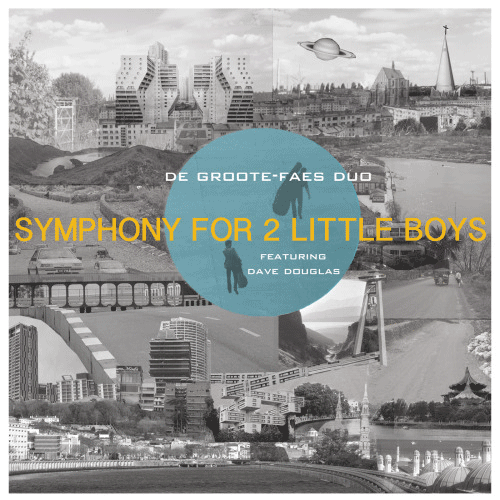 eNR058: Symphony For 2 Little Boys by De Groote-Faes Duo
eNR058: Symphony For 2 Little Boys by De Groote-Faes Duo
Nicola Negri, All About Jazz (25/01/2018) ***1/2
"Secondo album per il duo belga formato da Bruno De Groote (chitarra elettrica) e Ben Faes (contrabbasso), dopo l'esordio di En Route (2014). Per l'occasione, il gruppo ha invitato il trombettista Dave Douglas a partecipare alla registrazione, in tre dei dodici brani in programma.
La musica del duo si colloca in un modern jazz tutto sommato tipico di una certa scena europea: tecnicamente impeccabile, con composizioni ben costruite e una spiccata predilezione per la cantabilità dei temi e lo sviluppo tradizionale su strutture essenziali.
Il contrabbasso, dal suono corposo e ben definito, fornisce una solida base per le evoluzioni della chitarra, che vira spesso e volentieri verso blues e rock, per poi rientrare subito in percorsi più tradizionalmente jazz.
Non mancano le sorprese, ad esempio in "La Bataille," in cui un preludio di chitarra distorta e contrabbasso con archetto crea uno stimolante contrasto con il bel tema seguente, che porta ad un finale boogie inaspettato. Oppure in "Bastien," dove l'equilibrio tra distensione melodica e complessità ritmica è indubbiamente efficace.
I brani più convincenti sono però quelli con Douglas. Il suono di insieme ricorda il Tiny Bell Trio, mentre dal punto di vista compositivo è evidente (e dichiarato) il debito con lo Zorn del progetto Masada, con temi dal sapore mediorientale/balcanico che risultano immediatamente coinvolgenti. La maestria di Douglas è ben in evidenza, in particolare nella splendida "Fermeture," dove la tromba sordinata espone un tema struggente per poi lanciarsi in un solo esemplare per capacità di sintesi ed efficacia della ricerca timbrica.
L'alternanza tra le dimensioni strumentali del duo e del trio risulta a volte un po' forzata, come se i brani con Douglas appartenessero ad un altro disco. Una maggiore coerenza avrebbe sicuramente giovato al risultato complessivo.
Symphony for 2 Little Boys è un disco indubbiamente ben suonato, anche se penalizzato da una produzione a volte fin troppo patinata, a cui manca forse un po' di mordente, e una maggiore chiarezza di idee, per essere davvero memorabile."
 eNR064: – The Ear Cannot Be Filled With Hearing by Giovanni Di Domenico & Abschattungen
eNR064: – The Ear Cannot Be Filled With Hearing by Giovanni Di Domenico & Abschattungen
Dave Sumner, Bird is the Worm (22//01/2018)
"This large ensemble performance led out by pianist Giovanni Di Domenico goes big and gives it everything they've got. They toe the line where sonic wildness becomes random dissonance, and so each of the four extended pieces of his 2017 release perpetually cycle between states of dispersal and reformation. The thing that triggers the transition back to structure is a groove. It's as if it suddenly emerges from beneath the surface of the song, like the earth swelling up and grumbling out a heady tempo. It's an arresting feature of an interesting album. Music from Brussels, Belgium."
 eNR054: Getting Lost in Tiny Spaces by GLiTS
eNR054: Getting Lost in Tiny Spaces by GLiTS
Georges Tonla Briquet, Jazzenzo (08/01/2018)
Trompettist Bart Maris en pianist Peter Vandenberghe trekken al jaren samen op als leden van Flat Earth Society en voordien van X-Legged Sally. Voor deze 'Getting Lost In Tiny Spaces' kozen ze onder de naam GLiTS de duo-formule. Actie en spanning zijn er niet minder om.
De hoestekeningen van Bart Maris in pure zwart-wit Masereel-stijl, duiden meteen aan waar de inhoud om draait. Een verzameling muzieknoten geordend volgens semi-kubistische principes. In totaal dertien kleine vakjes waarbinnen telkens een kort verhaal verteld wordt. De meeste zijn van de hand van Maris, een aantal schreven ze samen maar uiteindelijk mondt alles steeds uit in een dynamische aanwending van (stukjes) improvisatie.
Maris en Vandenberghe steken van wal in hyper intensieve overdrive. Afwisselend zijn ze bestuurder en medebestuurder. Er wordt nooit overgeschakeld op automatische piloot. Het duo heeft duidelijk een plan en een uitgestippelde reisroute. Het geluidsdecor waar ze doorheen flitsen, zit propvol contrasten. Hoge trompettonen ruimen plaats voor donkere pianoriedels. Kinetische stukken vloeien over in minimalistische passages. Een van de hoogtepunten is 'Tiny Space' dat langzaam uit het niets opduikt om slechts noot voor noot geheimen prijs te geven en dan toch uiteindelijk met een open einde af te sluiten. Ook het spiritueel getinte 'GOI' blijft na elke beluistering fascineren.
Extra verrassend wordt het als je de cd at random gaat luisteren. Een schijfje dat perfect past in de eclectische catalogus van el NEGOCITO.
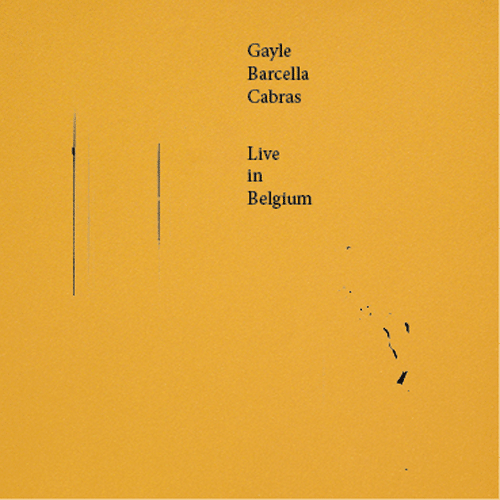 eNR062: Live in Belgium by Gayle Barcella Cabras
eNR062: Live in Belgium by Gayle Barcella Cabras
Mark Corroto, All About Jazz (04/01/2018) ****
Picking up any recording by the saxophonist (sometimes pianist) Charles Gayle always reminds me of the quote by actress Bette Davis' from the the film All About Eve (1950). After downing her martini in one gulp, Davis walks away, turns, and announces "fasten your seatbelts, it's going to be a bumpy ride." Not bumpy as in uneven or rutted here, but strident and earth-shaking music. Live In Belgium is no exception to that narrative.
By now, the story of Gayle is well known. Homeless and playing his saxophone on the streets of New York for twenty years, his explosion onto the music scene in the later 1980s coincided with the DIY Downtown movement at the Knitting Factory and the discovery of free jazz by punk rock fans, including Henry Rollins. Funny thing about Gayle is, he has never abandoned his principles or debased his music. His edge remains razor sharp. This recording was made during a tour with Belgium-based Italian musicians Manolo Cabras and Giovani Barcella, both worthy complements to Gayle's approach.
Opening with the fiery improvisation "Chiaro Sguardo," the trio attempts to catch lightning in a bottle or are they just burning off any residue and chasing the nonbelievers from the club? Maybe, but that is just a gross oversimplification. Gayle, like brother Albert Ayler before, has a way of raising intensity by stripping music down to its essence. "Di Piccola Taglia" trickles then pours energy music over the crowd as a ritual of emptying. The piece finishes with Barcella's drum solo and the next track is a solo piece from Cabras' bass. It is quite obvious these three have created a mutual trust and friendship as the camaraderie is perceptible. The trio doesn't so much cover John Coltrane's "Giant Steps" on "Steps," as recontextualize it within the free jazz realm. He has taken on the classic composition on three previous recordings, and like those outings, he liberates Trane's technical exercise from its moorings to launch the music into the stratosphere. Like Anthony Braxton, Gayle sets his saxophone down to play piano. On "Dimmi" he explicates his musical theory by way of a more straightforward 88 keys. The passion remains here, and his technique is more expressive than Braxton.